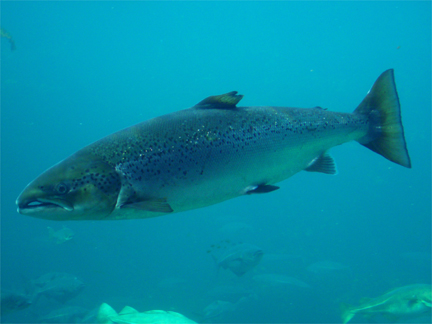France - conservation/environment
Atlantic salmon return to River Seine
Article published on the 2009-08-11 Latest update 2009-08-11 12:06 TU

An Atlantic salmon or Salmo salar
(Photo: Wikipedia)
Salmon have returned to the French River Seine after almost 100 years away from the illustrious waterway. The salmon have reappeared with no specific effort to reintroduce them, but following initiatives to reduce pollution in the river.
Atlantic salmon, or Salmo salar as they are known scientifically, are returning to the previously polluted river Seine in droves according to research by the France National Federation for Fishing.
They recorded at least 260 salmon last year who were returning to the Seine’s Parisian banks, during research undertaken at a key transit point between the Atlantic and French capital.
Meanwhile, last month an angler hooked a six kilo specimen just downstream from The City of Light. And in October last year a fishermen caught an even bigger one, again downstream in Suresnes.
In the past, the Seine was home to a flourishing population of the migratory species. But sometime between the first and second world wars, the salmon succumbed to the growing pollution from the chemical and agriculture industries, as well as the construction of dams. By the 1970s it was described by some as “nearly dead”.
David Downie’s book, Paris, Paris describes how the situation gradually improved from the early 1990s, although then Paris mayor Jacques Chirac was “a trifle premature when he tossed trout and salmon into what was still a sump.”
Chirac had promised that the Seine would become clean enough to swim and fish in. But he never did manage to keep his promise of taking a dip by the Eiffel Tower or Notre Dame Cathedral.
A program dubbed, ‘Operation Clean Seine’, is one of the main reasons salmon and other species of fish have returned to the river. New water purification plants and separating sewers from storm drains have removed many of the pollutants and encouraged the salmon back to the capital’s river.
Scientists believe that the creature is a “bellwether” species, whose wellbeing is a good environmental indicator. They have also been studying salmon’s behaviour in the Seine, releasing adult fish and tracking their movement.
Most Atlantic salmon live through freshwater and saltwater phases, travelling back to their original birthplace to reproduce.







